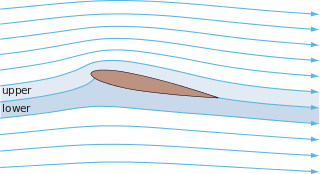Proof
The general expression for Poisson's equation in electrostatics is
where is the electric potential and is the charge distribution over some region with boundary surface .
The uniqueness of the solution can be proven for a large class of boundary conditions as follows.
Suppose that we claim to have two solutions of Poisson's equation. Let us call these two solutions and . Then
- and
It follows that is a solution of Laplace's equation, which is a special case of Poisson's equation that equals to . Subtracting the two solutions above gives
| (1) |
By applying the vector differential identity we know that
However, from ( 1 ) we also know that throughout the region Consequently, the second term goes to zero and we find that
By taking the volume integral over the region , we find that
By applying the divergence theorem, we rewrite the expression above as
| (2) |
We now sequentially consider three distinct boundary conditions: a Dirichlet boundary condition, a Neumann boundary condition, and a mixed boundary condition.
First, we consider the case where Dirichlet boundary conditions are specified as on the boundary of the region. If the Dirichlet boundary condition is satisfied on by both solutions (i.e., if on the boundary), then the left-hand side of ( 2 ) is zero. Consequently, we find that
Since this is the volume integral of a positive quantity (due to the squared term), we must have at all points. Further, because the gradient of is everywhere zero and is zero on the boundary, must be zero throughout the whole region. Finally, since throughout the whole region, and since throughout the whole region, therefore throughout the whole region. This completes the proof that there is the unique solution of Poisson's equation with a Dirichlet boundary condition.
Second, we consider the case where Neumann boundary conditions are specified as on the boundary of the region. If the Neumann boundary condition is satisfied on by both solutions, then the left-hand side of ( 2 ) is zero again. Consequently, as before, we find that
As before, since this is the volume integral of a positive quantity, we must have at all points. Further, because the gradient of is everywhere zero within the volume , and because the gradient of is everywhere zero on the boundary , therefore must be constant---but not necessarily zero---throughout the whole region. Finally, since throughout the whole region, and since throughout the whole region, therefore throughout the whole region. This completes the proof that there is the unique solution up to an additive constant of Poisson's equation with a Neumann boundary condition.
Mixed boundary conditions could be given as long as either the gradient or the potential is specified at each point of the boundary. Boundary conditions at infinity also hold. This results from the fact that the surface integral in ( 2 ) still vanishes at large distances because the integrand decays faster than the surface area grows.






























